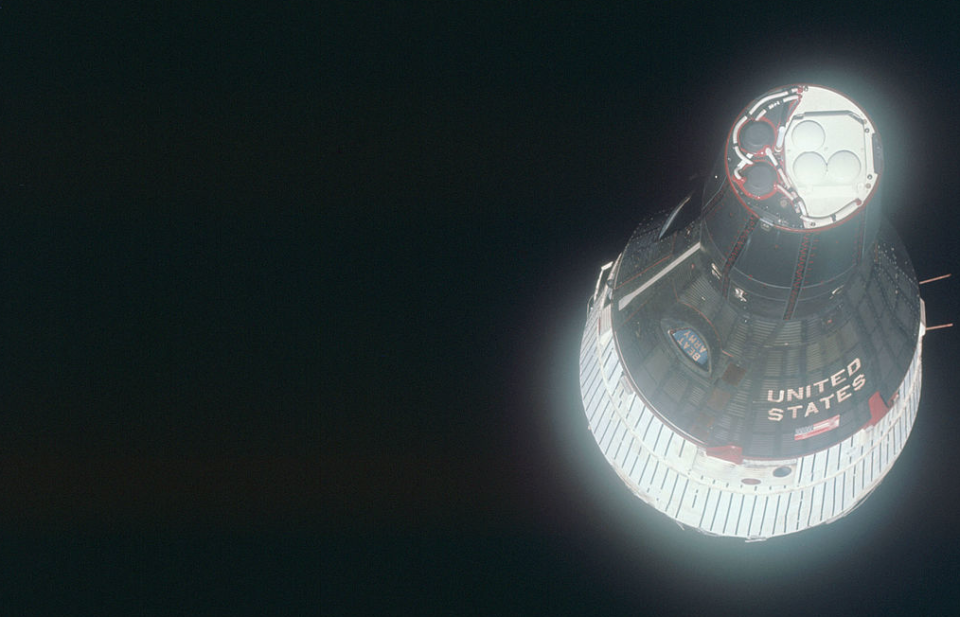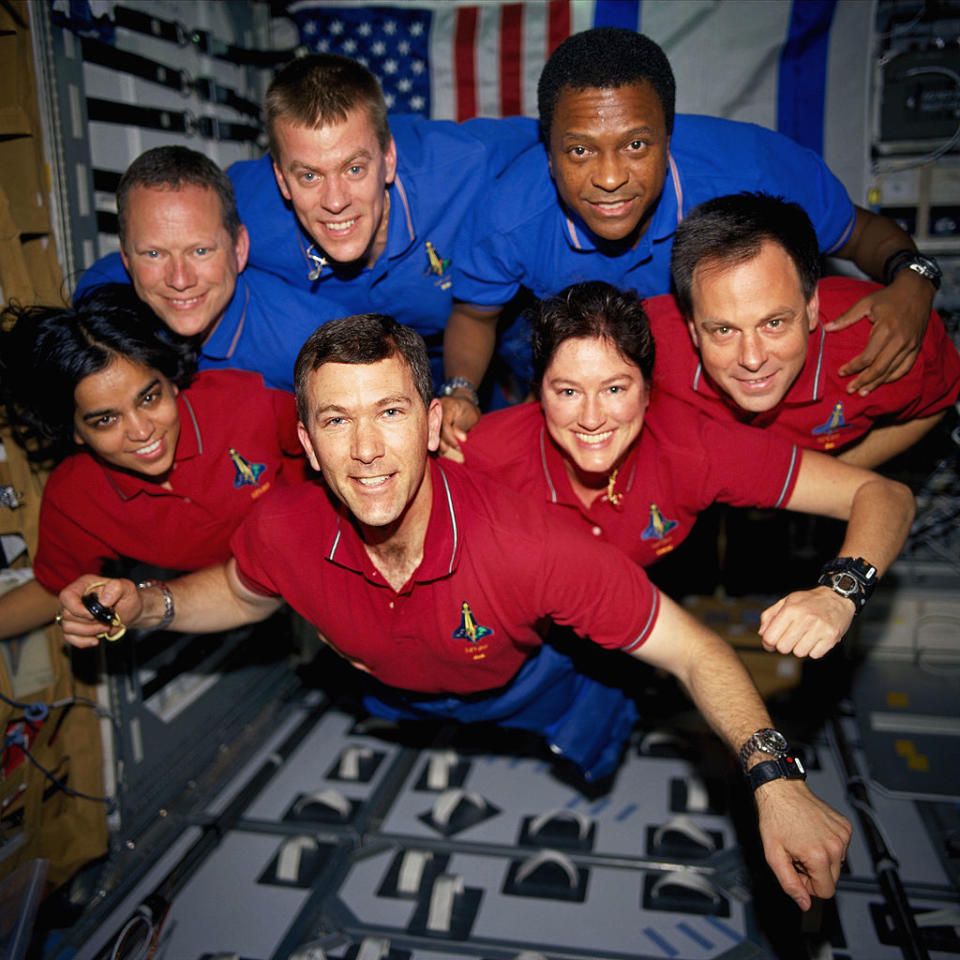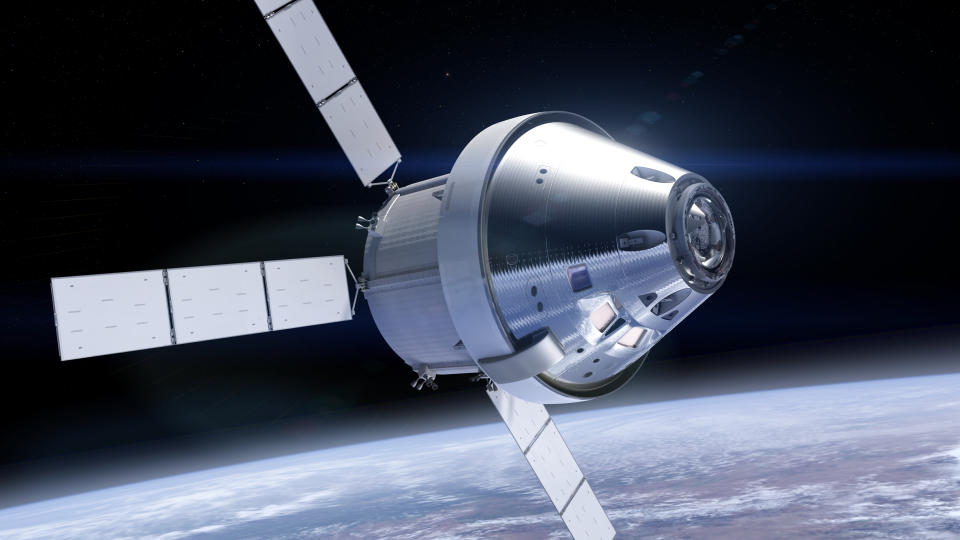How the NASA Wake-Up Call Went From an Inside Joke to a Beloved Tradition


Hello Wally, this is Jack Jones
Wally, it's so nice to know you're up where you belong.
All systems go, Wally, you're 4-0, Wally
Tom, all that's Navy Jazz for razzmatazz
You can't go wrong
While the earth's turning, the midnight oil was burning.
Gets you your requests from way back,
So sit back with the wax, fellows, settle down and relax, fellows.
We'll see you down in Houston town again.
In December 1965, crammed inside their Gemini 6 capsule, astronauts Wally Schirra and Tom Stafford listened as crooner Jack Jones serenaded them with a specially written parody of the hit Broadway tune "Hello Dolly."
This was NASA's first astronaut wake-up call.
Originally designed to keep astronauts on a rigid schedule (since the lack of sunrises and sunsets can be disorientating), playing music to wake astronauts from their space slumber quickly became tradition. An extensive NASA report even details every single wake-up call, from Gemini 6 until the final space shuttle mission in July 2011. And despite the current six-year musical hiatus, NASA could soon be getting the band back together.
Pressing Play
While NASA's long-standing practice of carefully curating astronaut wake-up calls is a fun factoid for terrestrial humans, it carries real poignancy for space travelers. "On board, the crew's eyes are opening, they are floating out of their sleeping bags, the world is in the window and they are listening to a song that's important them," Canadian astronaut Chris Hadfield told Popular Mechanics, "For us, it's a chance to touch base with home."
No one really knows why a "Hello Dolly" parody was the first wake-up call, but NASA Chief Historian Bill Barry told PRI that it may have simply been an inside joke. Eventually, Houston expanded its musical tastes, piping in an array of tunes during the Gemini 7 mission for wake-up calls and times of inactivity. Because the flight took place in December, many songs were fit for the holidays, including "I Saw Mommie Kissing Santa Claus," requested by astronaut Jim Lovell's 12-year-old daughter.
"It becomes the soundtrack of the surreality of what's going on up there." - Astronaut Chris Hadfield
The Apollo 10 crew woke up to Frank Sinatra's "Come Fly With Me," and heard "Fly Me to the Moon" when the actual moon shined brightly through the capsule's window. For Apollo 11, the mission that carried Neil Armstrong and company to the moon, NASA played news and sports reports instead, but soon went back to music for the Apollo 12 mission. Two years later, Apollo 15 astronauts woke up to the theme from 2001: A Space Odyssey.
In seven years, what was started as an inside joke became a part of the crew's daily routine, adding moments of levity during stressful missions. "[The wake-up call] becomes the soundtrack of the surreality of what's going on up there," Hadfield says.
An Evolving Tradition

Hadfield spent a total of 166 days in space spread over three missions, so he knows what makes a good astronaut wake-up call. "You want to have music that not only wakes you up, but gets your pulse going at the right speed," says Hadfield, "and the music plays in your head all day... if they choose a good one."
Besides just getting people out of bed, the wake-up songs are also used to encourage crew camaraderie and commemorate special moments. When Hadfield became the first Canadian to walk in space, mission control played a song from Canadian folk singer Stan Rogers in his honor called "Take It From Day to Day" along with a short heartfelt message from his Earth-bound colleagues.
Hadfield also had the opportunity to choose the songs for crews in his position as CAPCOM, the spacecraft communicator. He says that he would often ask the family if they had any suggestions, but there were times he just went with instinct. Hadfield picked the theme song from the 1960s Japanese TV show Ultraman in honor of Japanese crew member Takao Doi, and Schoolhouse Rock's "Interplanet Janet" for astronaut Janet Kavandi. "Sometimes the songs were kinda unusual," Hadfield says of his own musical choices, "but it always meant something to the crew."
A wake-up call isn't always a simple recording, either. Artists like Neil Young, Paul McCartney, and Beyoncé are just a few who've performed personal wake-up calls. "There's bit of one-upmanship that happens when it comes to doing these greetings," Barry tells Popular Mechanics. And of course, there has been the obligatory Star Trek wake-up calls as well-from both Captain Kirk and Captain Jean-Luc Picard.
But perhaps the most elaborate production came in 1981, when CAPCOM and the first American woman in space, Sally Ride, arranged for Jim Henson to put together several personalized wake-up calls from the "USS Swinetrek," the galaxy-trotting crew from the Muppet Show sketch "Pigs in Space." As Henson wrote in his diary, the quick bits had Captain Hogthrob, First Mate Piggy, and Dr. Strangepork personally welcoming their fellow pigs to space, but once Captain Hogthrob learned the astronauts were actually humans, he sighed in defeat "well, there goes the neighborhood."
On June 17, 2002, some bad Florida weather delayed the landing of the Endeavor crew. The next morning they woke up to Sonny and Cher's "I Got You Babe," a nod to the song that starts every Feb. 2 in the 1993 film Groundhog Day. In the NASA recording, the crew jokes that they feel just like Bill Murray, destined to repeat another day.

As fun and lighthearted as many of these wake-up calls were, they can also serve as a reminder of how dangerous space can be. On January 31, 2003, mission control played a rendition of "Scotland the Brave" as a wake-up call for the Columbia's red team. At the end of the song, Captain Laurel Clark tells mission control "we are really excited to come back home." But they never did. The next day, the Columbia broke apart upon re-entry, killing all seven astronauts on board.
After nearly 45 years of moments filled with laughter and sadness, Houston broadcasted the final wake-up call on July 21, 2011. Kate Smith's rendition of God Bless America woke the Atlantis crew followed by a dedication "to all the men and women who put their heart and soul in the shuttle program all of these years."
A Song on Pause

Both Hadfield and Barry reference an almost cosmic link between rock stars and those who travel among the stars. On Gemini 6, astronauts Schirra and Stafford performed "Jingle Bells" for mission control with a harmonica and bells they snuck on board. In 1987, several astronauts formed "Max-Q" an all-astronaut rock band, and Hadfield is also a talented musician himself, who performed both Elton John and David Bowie songs while in space.
"(Bowie) loved the idea of space travel. For him to see his music perform while in orbit, it delighted him," says Hadfield. Bowie went on to call Hadfield's cover "possibly the most poignant version of the song ever created."
Wake-up calls stopped after the shuttle program because missions became much longer, and schedules weren't as rigid as they once were. But Barry speculates the tradition could make a comeback when the Orion spacecraft starts its missions sometime in the next decade. Astronauts flying to the moon and beyond will likely face regimented flight itineraries similar to NASA's early Gemini and Apollo programs-along with the wake-up calls that go with them.

You Might Also Like

